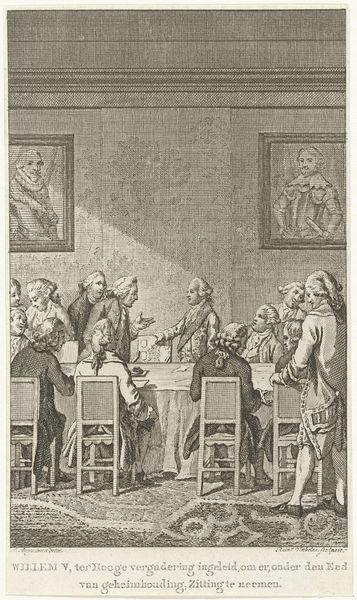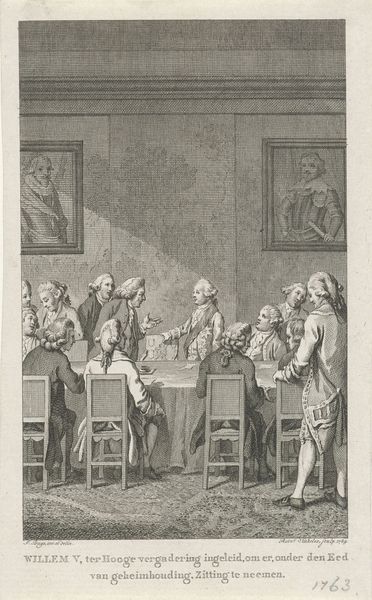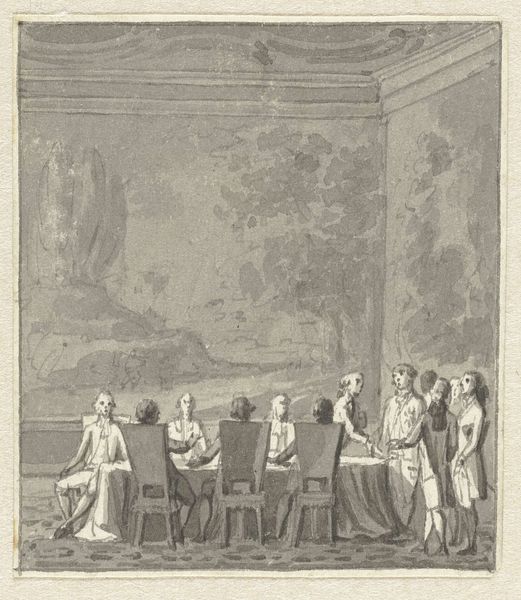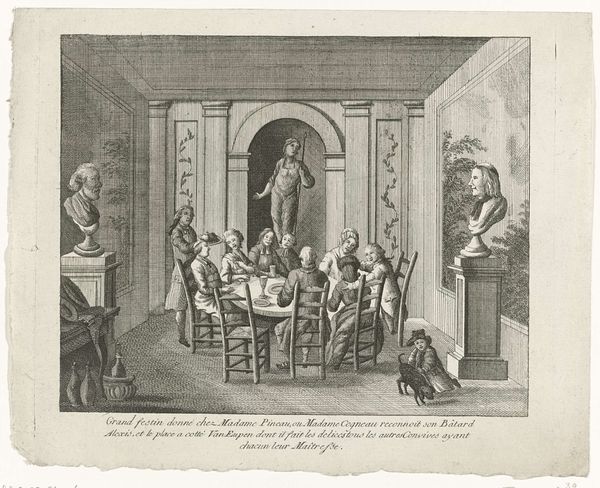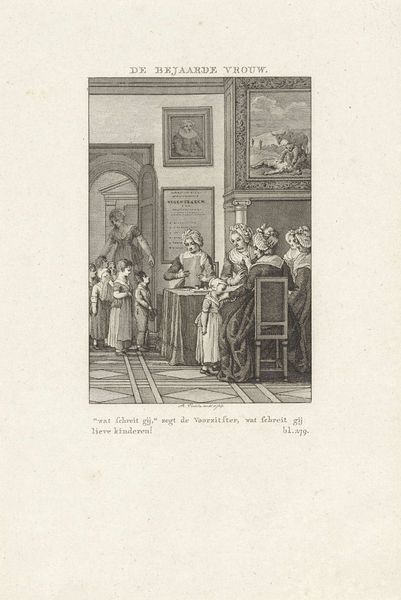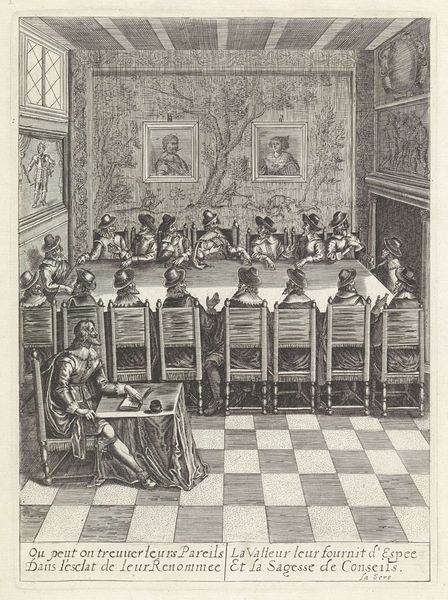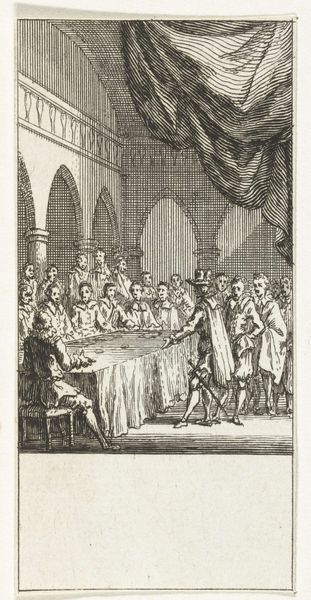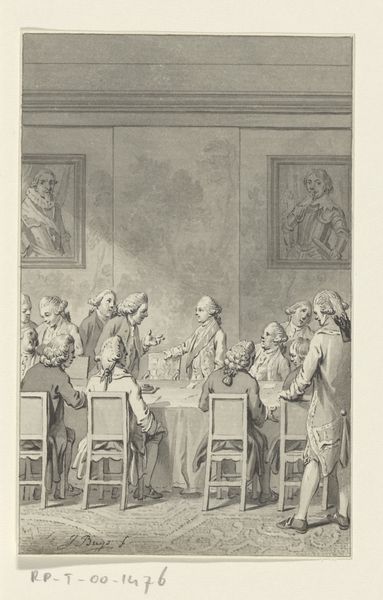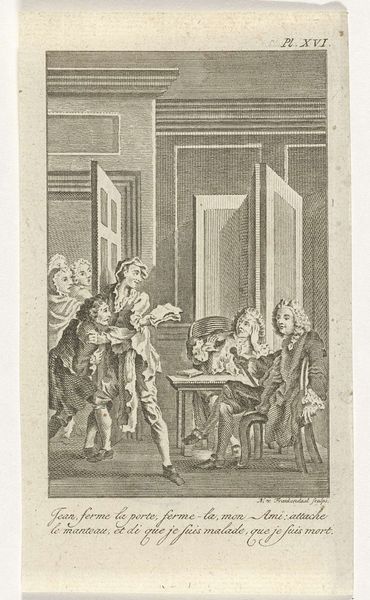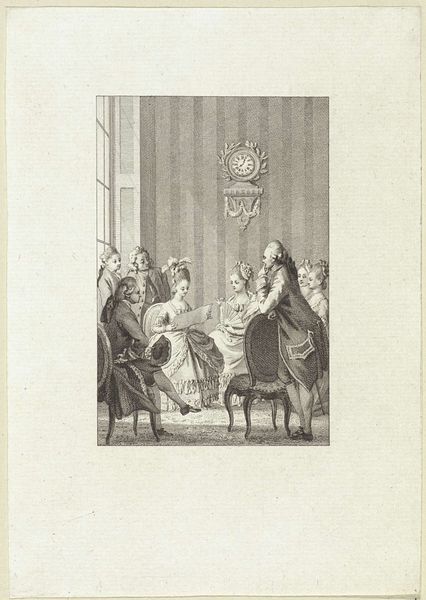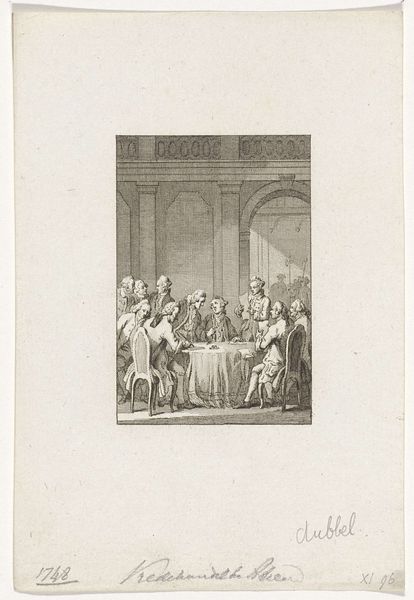
Willem V neemt voor het eerst zitting in de Raad van State, 1763 1795 - 1797
0:00
0:00
Dimensions: height 230 mm, width 155 mm
Copyright: Rijks Museum: Open Domain
Curator: Let's take a look at this engraving from the late 1790s by Reinier Vinkeles. It's titled "Willem V takes his seat for the first time in the Council of State, 1763." You'll find it in the Rijksmuseum. Editor: My initial impression? It’s all so rigidly posed! They’re practically frozen in time. Is it just me, or does everyone look deeply uncomfortable? And that stark light... it gives the whole scene a dramatic, slightly unsettling feeling. Curator: That "unsettling feeling" might be precisely the point. This piece commemorates a pivotal moment, but was created well after the actual event. Willem V's reign was marked by increasing political instability, leading to the Batavian Revolution. Consider this print, created between 1795 and 1797, amid growing criticism of the ruling House of Orange. Editor: So, it’s propaganda then, veiled or overt? All those severe faces… it doesn’t exactly scream "popular leader." More like, "we're doing this because we *have* to." Is that too cynical? Curator: Not at all. The formality reflects Baroque traditions of portraying authority, but it also carries the weight of political messaging. Vinkeles likely aimed to present Willem V as a legitimate, established ruler at a time when that legitimacy was heavily questioned. The print functioned within the public sphere to shape opinions. Editor: The details, even in this style, are fascinating, aren’t they? Like those portraits on the walls! They feel almost judgmental, looming over the meeting. It’s like history is watching, or even disapproving. Curator: They are symbolic reminders of past rulers and their legacies, indeed. The artist used this visual vocabulary to strengthen or perhaps subtly critique the subject's actions within a historical context. Every element, from the composition to the lines of the engraving, is charged with potential meaning. Editor: Looking at it now, it's less about what's depicted and more about *why* it was depicted this way. All that repressed energy… Makes me think what the engraving left unsaid is even more telling than the official record it's showing. Curator: Exactly. It underscores the importance of analyzing art beyond its surface, understanding its position within a larger sociopolitical landscape. Editor: Absolutely. A perfect snapshot of history wrestling with itself, captured in black and white!
Comments
No comments
Be the first to comment and join the conversation on the ultimate creative platform.
